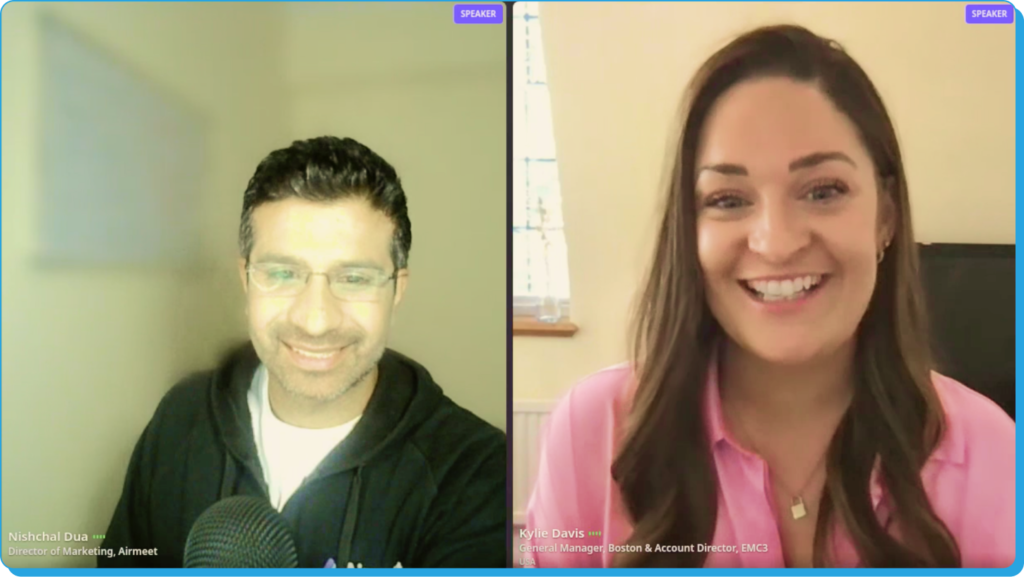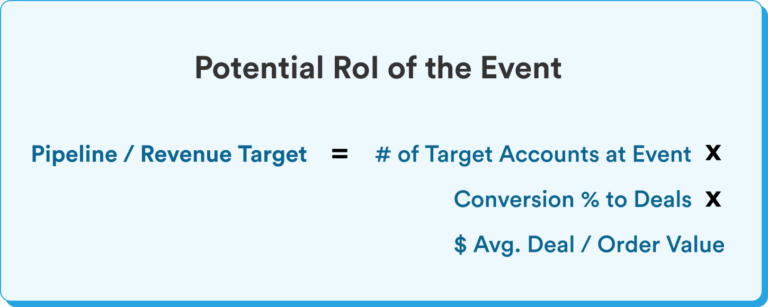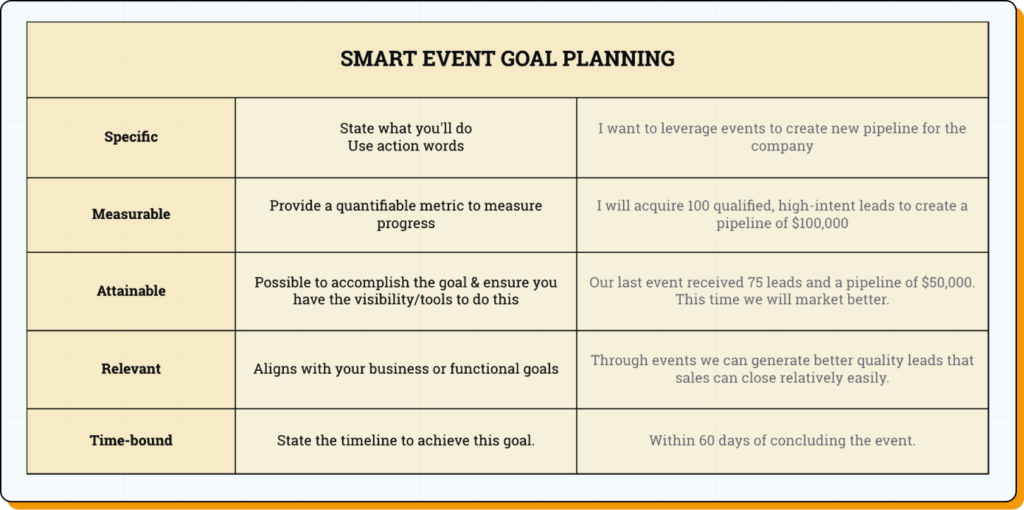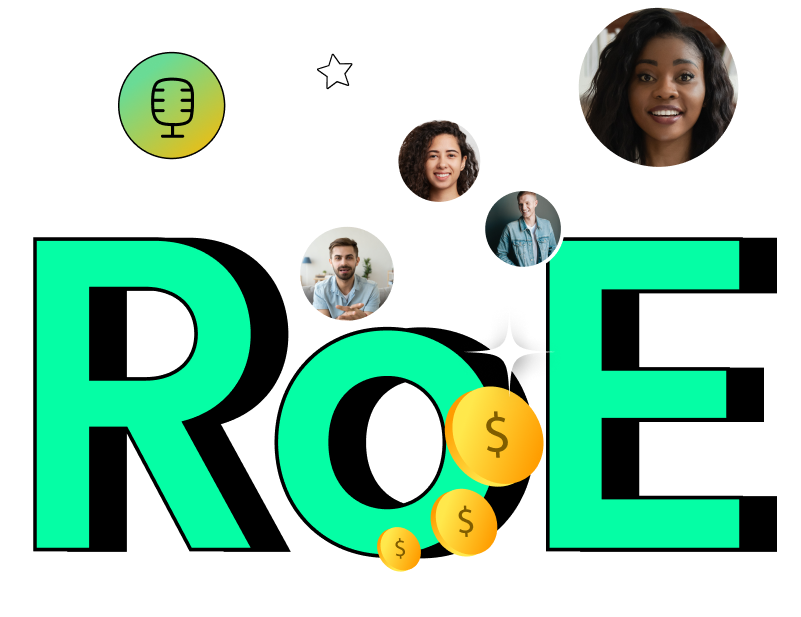Planning an event strategy is akin to preparing for a marathon. Without gathering proper knowledge of the execution, setting goals well in advance, and practicing, your performance plummets.
One of the most common concerns of event professionals is how to create an event strategy that creates the best experiences and also drives revenue. It can be tricky for sure if you don’t have the right set of goals and key metrics in place to track and optimize.
Kylie Davies, Account Director at emc3, and Nishchal Dua, Director of Marketing at Airmeet, shared an exciting framework and a goldmine of insights at the Event-led Growth (ELG) Summit on how to measure ROI on events (ROE).

Here are the key takeaways from the session:
Why is it important to measure the ROI of events?
Success looks different for different companies and brands, and it seldom happens to work in silos. Therefore, it is imperative to ensure that company goals, all teams, KPIs, and metrics are aligned before planning your event strategy and projected ROI from the events gamut.
ROI is a constant moving target. To disburse the budget for your event calendar for the year, the leadership needs to know where the money is going and what tangible returns are coming from the events. Therefore, measuring the ROI of the previous events and understanding what works and what does not is fundamentally important to keep your event quality improving and the momentum up and running across the year.
You can prove the leadership a projected revenue from events to fetch a buy-in using the formula:

Doing this can shed some light on the underlying problem areas to look out for solutions.
How to evaluate the success of your event?
Events do not have an endpoint—learnings from the last event feed into the planning of your following. If you are not doing that, it’s time to rewire your strategy. Events are a perennial experiential campaign that requires continuous brainstorming to optimize the attendee experience in the subsequent events, thereby achieving your event goals.
Events as a year-long continuum: SMART strategy
Your events always start at the end of your previous event. That’s how events have to be—SMART. Every event entails a lot of learnings, loopholes, and failures. Adopting a strategy such as SMART, as put across by our session experts, has a huge potential to optimize your events efforts consistently.

Your event calendar needs to have a strategy chalked out well in advance, wherein each event has a specific goal having a quantifiable metric aligned to the goal. You can have goal statements against each attribute, as shown in the above table. Creating a specific, measurable, attainable, relevant, and time-bound event strategy primes your event pathway to step up your event game.
Calculate the impact of your events: The ROE framework
The key highlight of the session was an exhaustive ROE framework based on the collective knowledge of Airmeet and emc3 to calculate the ROI of events. This framework is created on a Miro board to build a warehouse of knowledge from the experts around the parameters and metrics that impact event outcomes. Your event goals include product goals, marketing goals, attendee goals for product adoption, pipeline generation and customer advocacy, respectively.
Broadly, they can be categorized into two measurable, fundamental objectives with virtual events:
- Brand awareness and engagement: The metrics you must track and optimize your event strategy and event content for, should be:
- Registrations: Number of repeat registrations.
- Attendees: Turnout ratio from registrations, profile, demographics, geography, attendee per session data.
- Pre-event performance: Social media mentions, email click and open rates, organic mentions, uptick in direct traffic
- In-event performance: Average time spent in events, engagement, networking, NPS participation to rate.
- Post-event performance: Replays, content, product adoption
- Pipeline and revenue: To optimize the bottom line for your business, pipeline and revenue are the most crucial parameters. Observe the following metrics regularly over a period of time and combine the learning from brand and revenue back into your event strategy for improved outcomes:
- Sourced pipeline: It is the number of net new accounts, MQLs, SQLs, and Average deal value.
- Influenced pipeline: This is the pipeline that is touched by events, giving high-value prospects engaged or closed, impacting the number of accounts
- Accelerated pipeline: Dormant leads resuscitated by events that impact the number of accounts.
- Retention/expansion pipeline: Track the total ACV, retention revenue, and a number of high-value paying accounts engaged with the event.
- Sponsorship revenue: Track the numbers
Click here to find some instant ROI formulas that will help you better plan your events and align your business objectives. It is on a shareable Miro board to get fellow marketers building it further.
Track the 'WOW' factor at events
There is no direct formula that proves the happiness of your event attendees. However, there’s a myriad of factors and metrics that can be attributed to the audience’s happiness. For example, tracking your engagement metrics for your audience before, during, and after the event is a good practice to gauge their interest and excitement.
A few metrics marketers must focus on to suggest audience interest in their brand are:
- Number of quality and quantifiable leads generated through an event
- Demographics of the accounts
- NPS scores
- Number of shares on social media
- Number of booth visits during the event
Kylie sheds some light in the video:
Keep optimizing your RoE strategy to yield better returns
The ROI of events cannot be measured through absolute success and failure. It is not just a number game but a journey of continuously optimizing your event strategy that delights your audience and keeps your pipeline full. Because that’s what events are for. Building an exhaustive event strategy early on with quantifiable metrics set is a stepping stone in your ELG journey. So strive to make your events better consistently to skyrocket your events game.
Missed the ELG summit?
Watch the replay here.





























